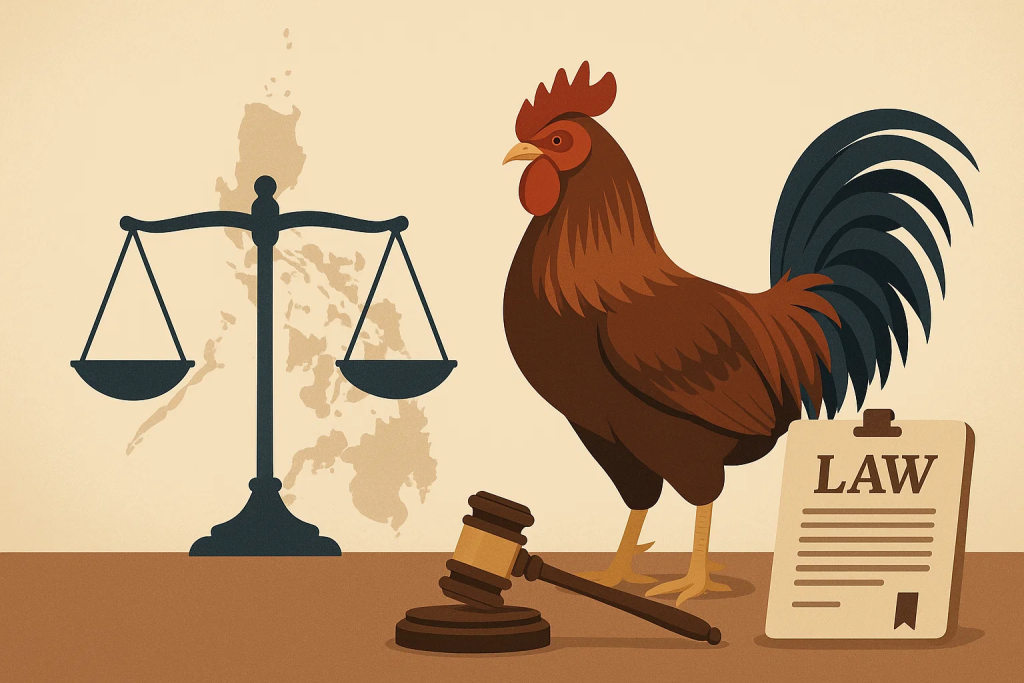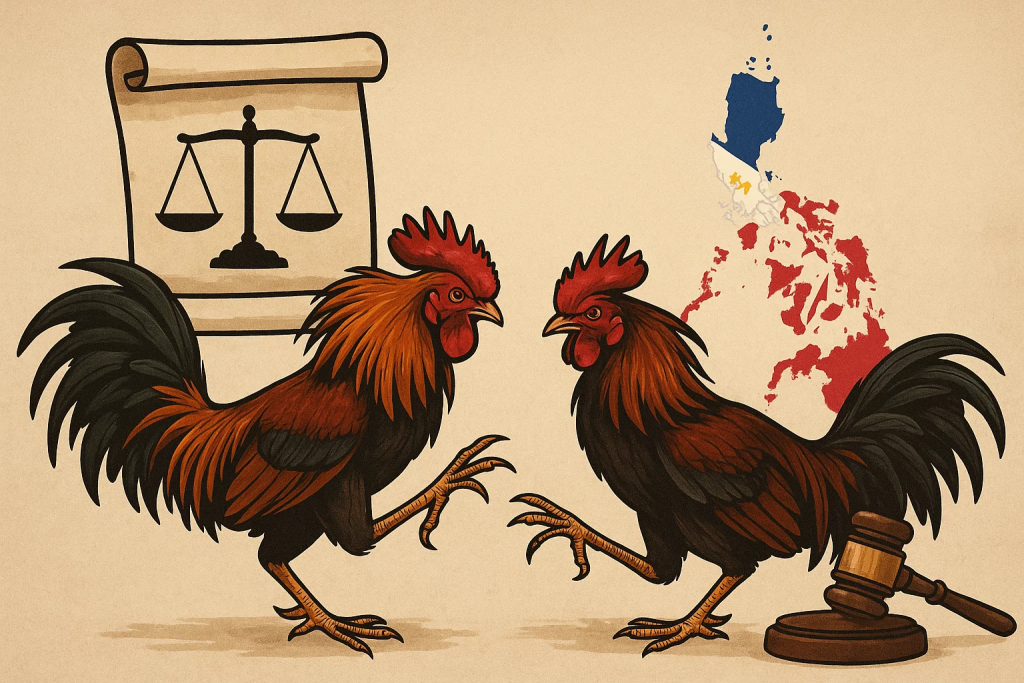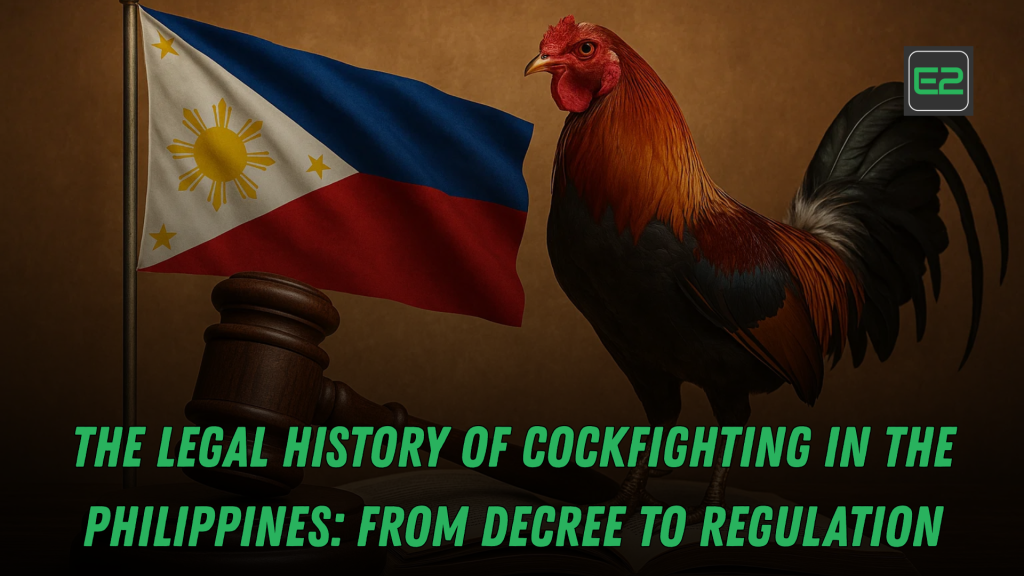Sabong, or cockfighting, is deeply ingrained in Filipino culture, with its roots stretching back centuries. However, its legal status in the Philippines has been anything but straightforward. From being a traditional pastime to facing periods of restriction, Sabong has undergone significant changes in its legal treatment. In this article, we will explore the legal history of Sabong in the Philippines, examining how it evolved from being a simple pastime to becoming a regulated industry.
Table of Contents
The Beginnings of Sabong in the Philippines
Sabong has been a part of Filipino culture for centuries, with historical records indicating that the practice dates back to pre-colonial times. It was traditionally associated with rural communities and played a role in local festivals and social gatherings. In the Spanish colonial period, Sabong was formalized as a commercial activity, with authorities organizing cockfighting events and allowing certain establishments to hold cockfights.
Despite its long-standing presence, the legal status of Sabong has always been intertwined with varying societal views, government interventions, and regulatory changes.

The Evolution of Sabong Laws: Early Regulations and the Decree of 1974
In the early years of the Republic of the Philippines, cockfighting was largely unregulated. However, as the popularity of the sport grew, the government sought to control the industry. The first major legal intervention came in 1974 when Presidential Decree No. 449 was enacted by then-President Ferdinand Marcos. This decree effectively legalized cockfighting as an organized industry, recognizing it as an entertainment and sports activity while imposing stringent regulations.
Presidential Decree No. 449 (1974)
Presidential Decree No. 449, signed into law on June 18, 1974, was a crucial turning point in the legal history of Sabong. This decree allowed the establishment of cockpits (venues for cockfights) under strict government oversight. The regulation provided guidelines for operating cockfights and aimed to ensure the safety of both participants and the animals involved.
The decree also required cockfighting organizers to secure a license from the government, thereby legalizing the sport under controlled circumstances. Moreover, this regulation established clear rules for breeding and training fighting cocks, setting the stage for a more formalized industry.
The Role of Government Agencies in Regulating Sabong
As the popularity of Sabong grew, the government further expanded its involvement in regulating the sport. The National Cockfighters’ Association was formed to manage the licensing and certification of cockpits and cockfighters. The government began issuing regulations to ensure that cockfighting adhered to certain ethical and safety standards. This period marked the beginning of a more professional approach to cockfighting, paving the way for its continued existence in Filipino culture.
The Decline of Sabong: Restrictions and the Moratorium
Despite its long history and deep cultural ties, Sabong faced significant challenges throughout the 1980s and 1990s. With changing societal norms and increasing concerns about animal cruelty, the sport came under greater scrutiny.
In 1987, President Corazon Aquino’s administration imposed a temporary moratorium on cockfighting activities. This restriction was primarily driven by growing concerns about the treatment of animals, particularly regarding the violence inherent in cockfighting matches. The restriction, however, was short-lived, as Sabong was once again deemed an important cultural activity that needed to be regulated rather than banned.
Psychological Insights Into Sabong: Why Some Roosters Don’t Fight

The New Legal Framework: Republic Act No. 8485
By the 1990s, Sabong’s status was once again brought to the forefront, with debates on how best to regulate the sport and prevent animal cruelty while preserving its cultural significance. The Animal Welfare Act of 1998, or Republic Act No. 8485, was enacted to address concerns related to animal cruelty across various industries, including Sabong. While the Act aimed to ensure better treatment of animals, it allowed exceptions for activities like cockfighting, provided these activities complied with strict government regulations.
Key Provisions of Republic Act No. 8485
Republic Act No. 8485 sought to strike a balance between animal welfare and the cultural and economic aspects of cockfighting. It explicitly allowed Sabong events, provided the cockpits met specific health, safety, and environmental standards. The law also emphasized the importance of licensing and oversight in regulating the number of events held and the breeding practices associated with cockfighting.
In addition to the Animal Welfare Act, the Department of Agriculture and the Bureau of Animal Industry (BAI) were given specific mandates to oversee the implementation of animal welfare standards within the Sabong industry. These government agencies were responsible for ensuring that cockfighting remained under ethical and legal boundaries.
Modern-Day Sabong: Legalization and Regulation
In recent years, Sabong has continued to thrive, but with tighter government regulation. The resurgence of the sport, particularly in urban areas, has led to a renewed focus on streamlining operations, regulating online betting, and modernizing the industry.

Online Sabong: A Growing Trend
One of the most significant developments in recent years has been the rise of online Sabong. With the advent of technology, betting on cockfights has moved to the digital world, leading to a shift in how Sabong is organized and experienced. The Philippine government, recognizing the need to regulate online betting platforms, has introduced additional legal frameworks to manage online cockfighting.
In 2020, the Philippine Amusement and Gaming Corporation (PAGCOR) began overseeing the regulation of online Sabong. This move ensured that operators were complying with government regulations and contributing to state revenues through taxes.
The Legal Framework Today
Today, the legal landscape of Sabong is more structured than ever before. With the combination of Presidential Decree No. 449, Republic Act No. 8485, and more recent developments in online betting regulation, Sabong operates within a clear legal framework.
Sabong events are regulated by local government units (LGUs), and only licensed cockpits are allowed to operate. Furthermore, specific rules govern the breeding, training, and management of fighting cocks to prevent cruelty and ensure the sport is conducted in a humane manner.
Challenges and Opportunities for the Future
While Sabong remains a beloved tradition in the Philippines, it is not without its challenges. The growing concern for animal welfare and the increasing scrutiny from local and international bodies regarding animal rights could lead to stricter regulations in the future. At the same time, the continued rise of online Sabong presents an opportunity for growth, especially as more Filipinos engage in digital platforms.
To ensure the sustainability of the sport, industry stakeholders must continue to focus on ethical practices, transparency, and legal compliance. The regulation of online Sabong is just one example of how the industry is adapting to modern challenges while preserving its cultural significance.
The Future of Sabong in the Philippines
The legal history of Sabong in the Philippines is a testament to the sport’s resilience and deep cultural roots. From its early days as a traditional practice to its regulation as an industry, Sabong has navigated a complex legal landscape. As the sport continues to evolve, it is clear that maintaining a balance between cultural preservation and ethical practices will be key to its future success.
Sabong, or cockfighting, has been a long-standing cultural practice in the Philippines, but its legal status has evolved significantly over time. Initially unregulated, the sport became legalized in 1974 with the enactment of Presidential Decree No. 449, which established strict guidelines for cockfighting events. This decree allowed cockpits to operate under government oversight, formalizing the sport.
In 1998, the Animal Welfare Act (Republic Act No. 8485) was introduced, allowing cockfighting but imposing animal welfare regulations to ensure humane treatment of animals involved. As concerns about animal cruelty grew, the government faced pressure to regulate the sport further.
The rise of online Sabong in recent years has presented new opportunities and challenges. In 2020, PAGCOR began overseeing online cockfighting to ensure legal compliance and contribute to state revenue. Today, Sabong operates under a structured legal framework, with regulations governing physical and online cockfights to balance cultural significance with ethical practices.
The future of Sabong will depend on addressing animal welfare concerns, ensuring transparency, and adapting to digital trends while maintaining cultural traditions.
Frequently Asked Questions
1. What is Sabong in the Philippines?
Sabong, or cockfighting, is a traditional Filipino sport where two roosters are pitted against each other in a fight. The practice has been part of Filipino culture for centuries and is both a form of entertainment and a competitive sport.
2. How did the Philippines regulate Sabong?
Sabong became officially regulated through Presidential Decree No. 449 in 1974, which legalized the sport under strict government supervision. Later laws, such as Republic Act No. 8485, also provided regulations aimed at ensuring animal welfare while permitting cockfighting under controlled conditions.
3. Is online Sabong legal in the Philippines?
Yes, online Sabong became legal with the regulation of online cockfighting platforms by the Philippine Amusement and Gaming Corporation (PAGCOR) in 2020. Operators are required to comply with government regulations.
4. What are the main legal challenges facing Sabong today?
The main legal challenges facing Sabong today are concerns related to animal welfare, the regulation of online cockfighting, and the increasing pressure from international bodies advocating for animal rights.
5. How can Sabong remain a sustainable industry in the future?
For Sabong to remain sustainable, industry stakeholders must prioritize ethical practices, government compliance, and transparency. The continued regulation of online Sabong and animal welfare standards will be crucial for the sport’s long-term viability.
